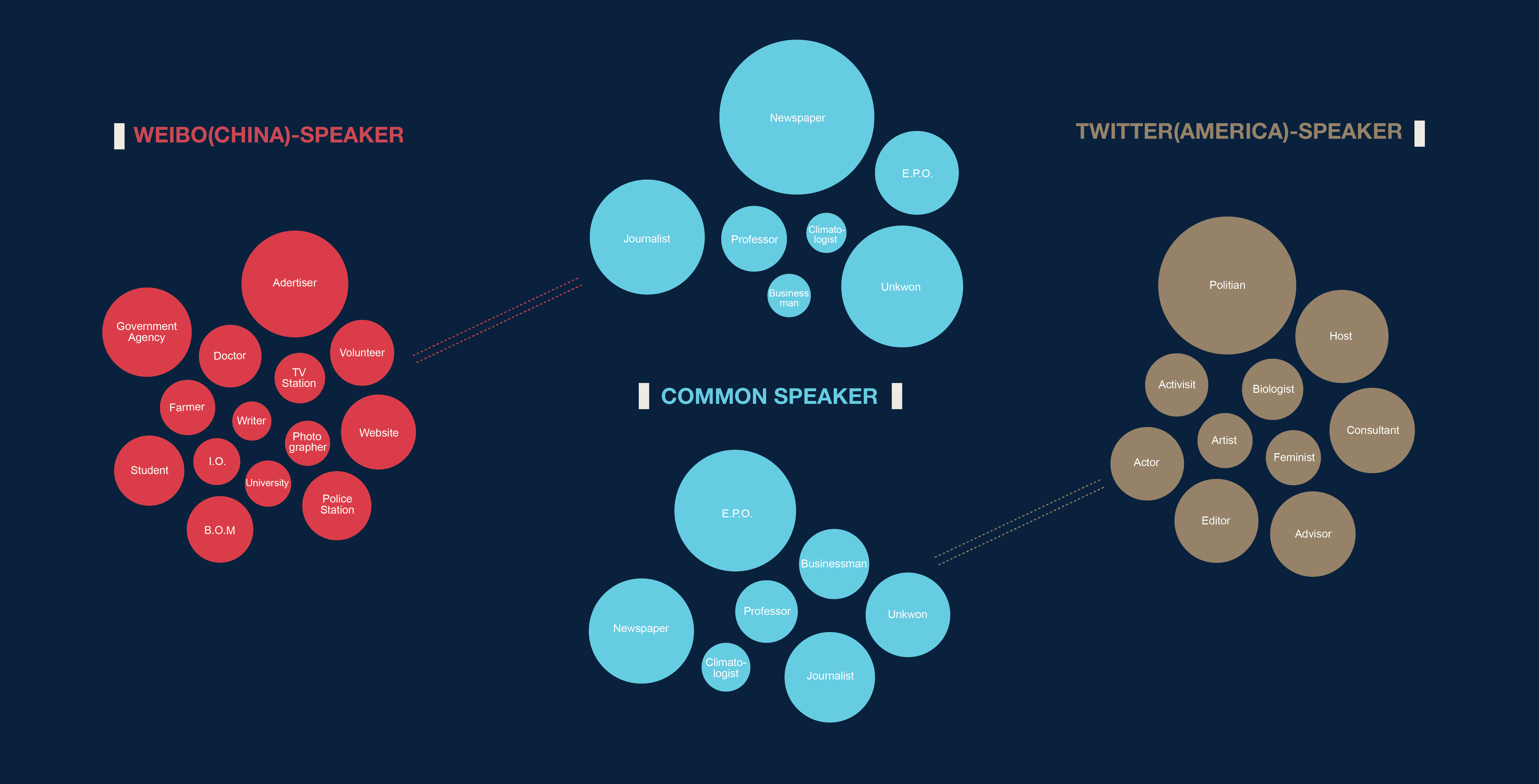Description
This part of the work aims to analyze the composition of the user on the social media, who are concerned about global warming and climate change.As more public voices can be heard on social media, this section we try to explore the public's understanding of issues we queried. We have chosen two platforms:Twitter and Weibo and for each platform we collected 600 posts and their users information.
On the left part of chart first we did a qualitative analysis, the user is divided into public and organizations with the cluster dendrogram. On the right part of the chart we did a quantitative analysis of the user, and we use a bar chart to show the number of people who are concerned about both issues. At the end of the chart you will get the total number of public and organizations. The second chart is intended to show the difference between the users and the difference between Weibo and Twitter.
According to the chart we can get some interesting results first the proportion and the type of Organization Weibo is much more than Twitter, second there are more ordinary people speak in Weibo, and more public figures speak in Twitter. Finally, only the government agencies speak in the Weibo, but in the Twitter we can only find the politicians’s tweets.



